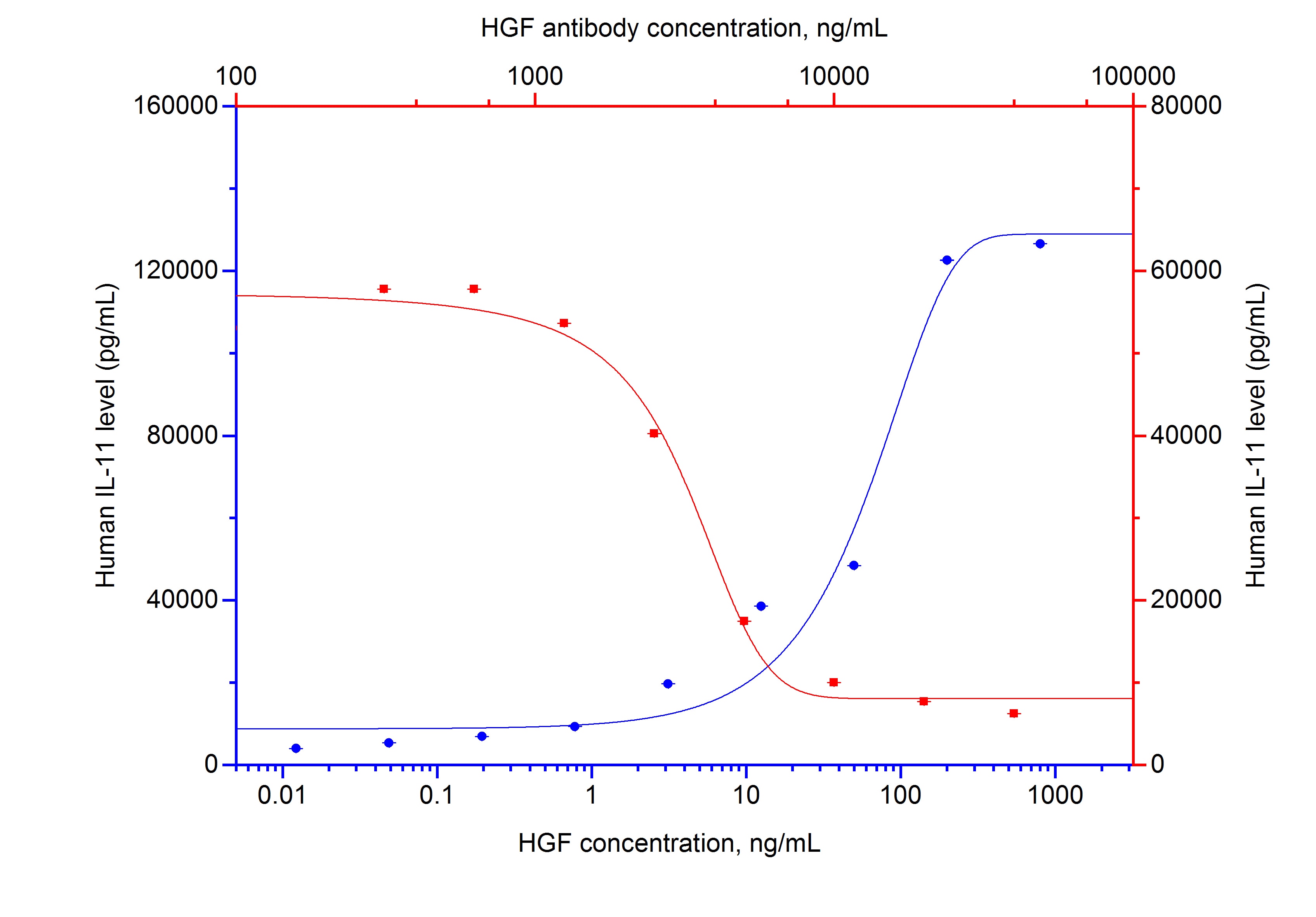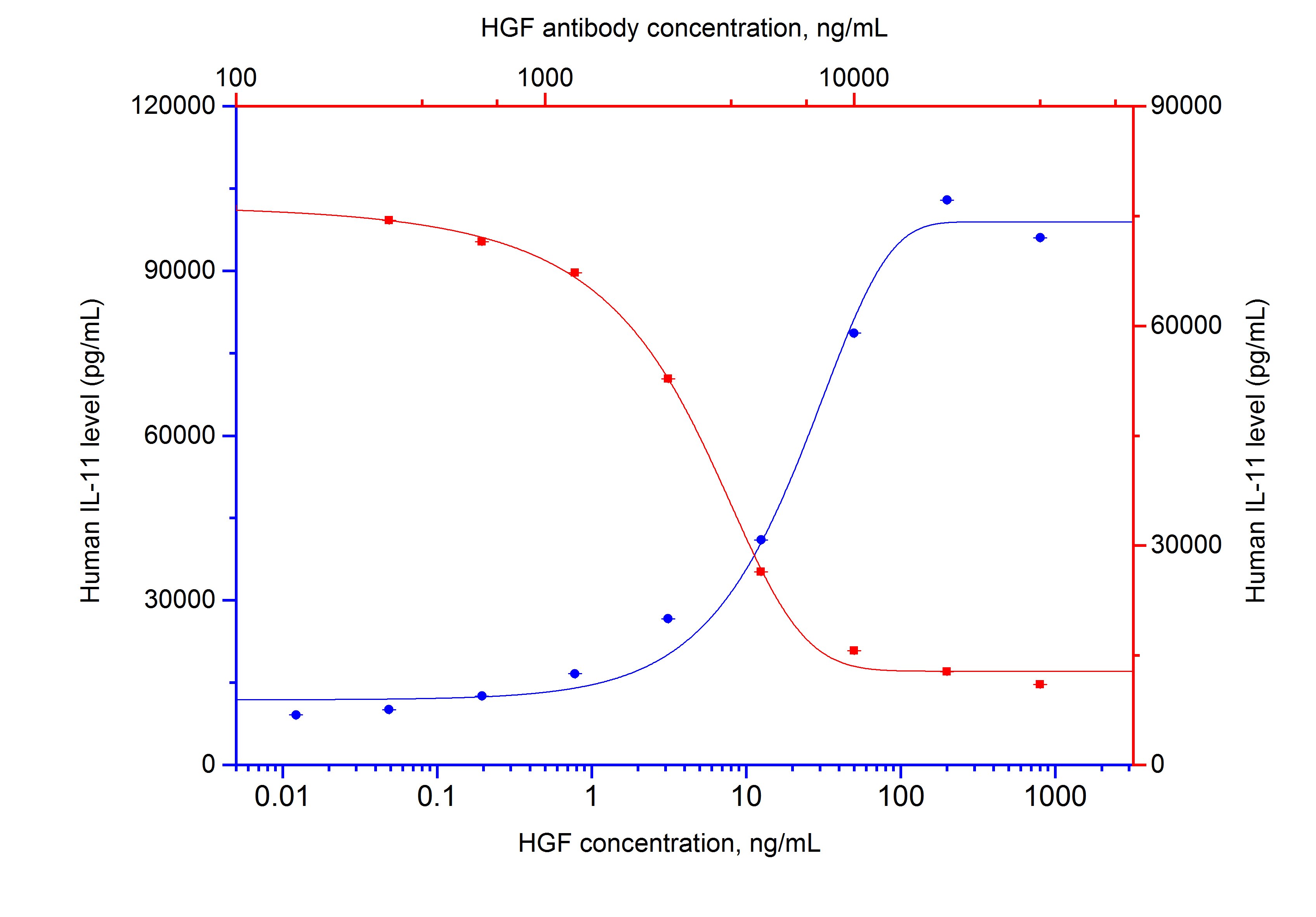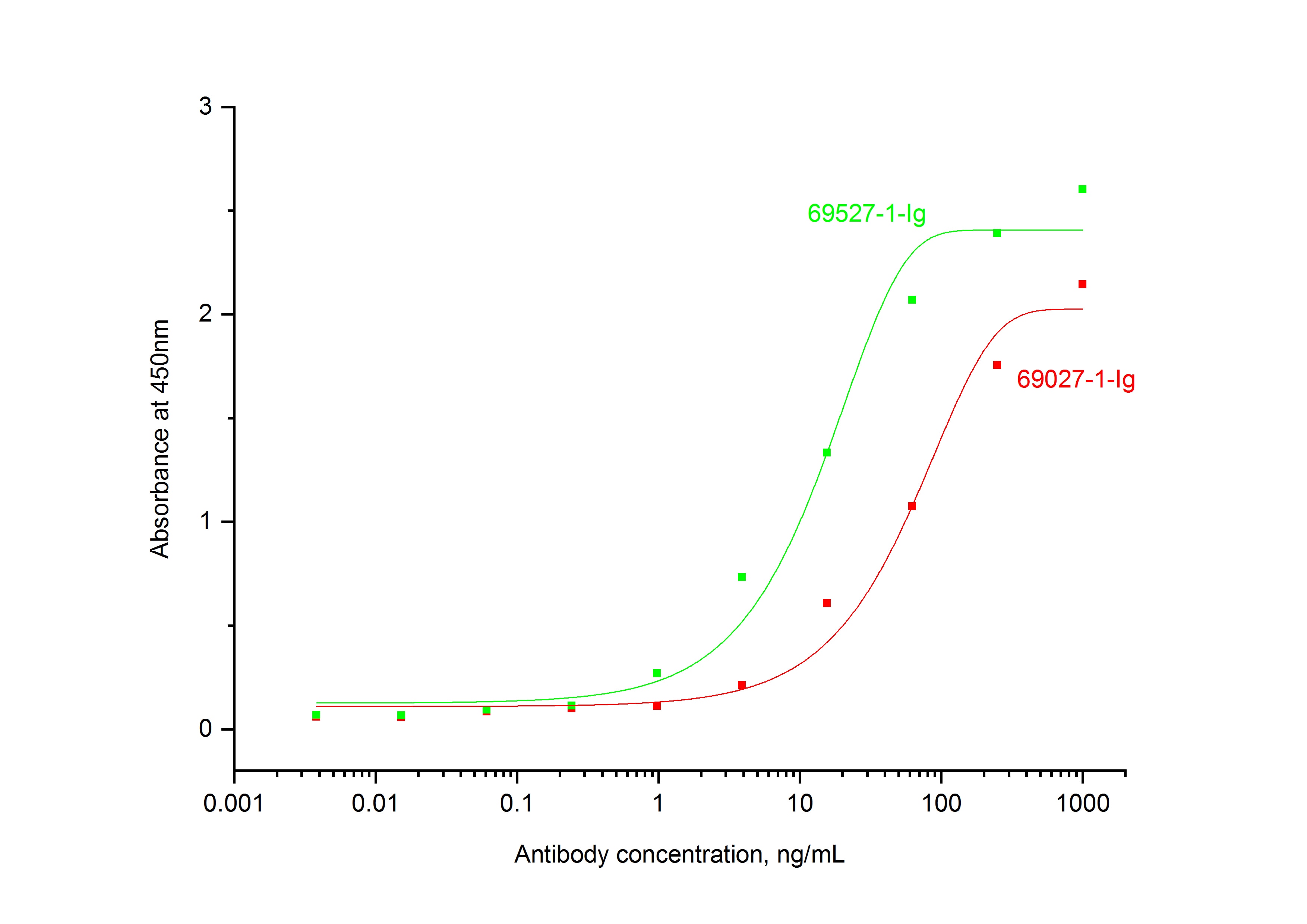Anticorps Monoclonal anti-NeutraKine®HGF
NeutraKine®HGF Monoclonal Antibody for Neutralization, ELISA
Hôte / Isotype
Mouse / IgG1
Réactivité testée
Humain
Applications
Neutralization, ELISA
Conjugaison
Non conjugué
CloneNo.
2D2B4
N° de cat : 69027-1-Ig
Synonymes
Galerie de données de validation
| Neutralization |
Informations sur le produit
69027-1-Ig cible NeutraKine®HGF dans les applications de Neutralization, ELISA et montre une réactivité avec des échantillons Humain
| Réactivité | Humain |
| Hôte / Isotype | Mouse / IgG1 |
| Clonalité | Monoclonal |
| Type | Anticorps |
| Immunogène | human HumankineHGF protein HZ-1084 |
| Nom complet | hepatocyte growth factor (hepapoietin A; scatter factor) |
| Symbole du gène | HGF |
| Identification du gène (NCBI) | 3082 |
| Conjugaison | Non conjugué |
| Forme | Lyophilized Powder |
| Méthode de purification | Purification par protéine G |
| Tampon de stockage | PBS stérile. |
| Endotoxin | <0.1 EU/μg |
| Reconstitution | This product was lyophilized from a 0.2 μm filtered solution in PBS. Reconstitute at 1.0 mg/mL in sterile H2O before use. |
| Stability and Storage | Lyophilized antibodies are stable for 1 year from the date of receipt if stored between (-20°C) and (-80°C). Upon reconstitution we recommend that the solution can be stored at (4°C) for short term or at (-20°C) to (-80°C) for long term. Repeated freeze thaw cycles should be avoided with reconstituted products. |
Informations générales
Hepatocyte growth factor (HGF) is the most potent mitogen of mature hepatocytes in primary culture. HGF is derived from a biologically inactive single chain precursor of 728 amino acids (pro-HGF) localized mostly on the cell surface and in the extracellular matrix. The mature form produced following proteolytic cleavage is composed of a 69-kDa α-subunit (containing four kringle domains) and the 34 kDa β-subunit, similar to the catalytic domain of serine proteases, but with amino acid substitutions in the active site. HGF is a pleiotropic cytokine which exerts a variety of effects on several cells, being involved in the regulation of many biological processes, such as inflammation, tissue repair, morphogenesis, angiogenesis, tumour propagation, immunomodulation of viral infections and cardio-metabolic activities.
This antibody is used to neutralize the bioactivity of HGF.




